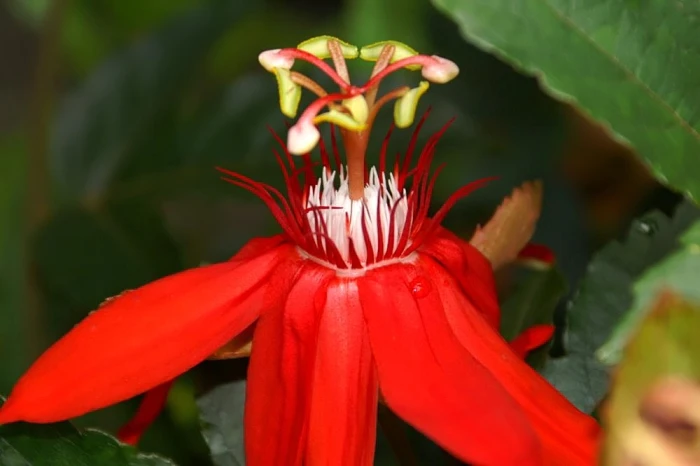Red Passionflower
(Passiflora racemosa)
Red Passionflower (Passiflora racemosa)
/
/

David J. Stang
CC BY-SA 4.0
Image By:
David J. Stang
Recorded By:
Copyright:
CC BY-SA 4.0
Copyright Notice:
Photo by: David J. Stang | License Type: CC BY-SA 4.0 | License URL: https://creativecommons.org/licenses/by/3.0/us/deed.en | Uploader: David Stang | Publisher: Wikimedia Commons |



















Estimated Native Range
Climate Requirements for East Orange, New Jersey
| This Plant | Your Site | Plant Suitability for Your Location | ||
|---|---|---|---|---|
| • Precipitation | 21" - 64" | 50" | Aquatic | Aquatic |
| • High Temp. | 72°F - 90°F | 86°F | Your summer temperatures are normal for this plant. | Excellent |
| • Low Temp. | 22°F - 62°F | 22°F | Your winter temperatures may be too cold for this plant | Too cold |
This plant should grow very well at your location but requires an aquatic environment.
Summary
Passiflora racemosa, commonly known as Red Passionflower, is an evergreen perennial vine originating from the Atlantic Forests of Southeastern Brazil. This habitat is characterized by high biodiversity and a warm, humid climate. The vine can reach up to 5 meters (16 feet) in length and features simple or 3-lobed leaves that grow up to 10 cm (4 inches) long. The Red Passionflower is renowned for its striking flowers, which bloom in summer and are about 12 cm (5 inches) in diameter. These blooms are vivid red with purple and white coronas, creating a dramatic display that is highly attractive to pollinators. Following the flowering period, the plant produces oblong green fruits.
The Red Passionflower is a popular ornamental plant due to its spectacular flowers and is often grown under glass in temperate regions to meet its minimum temperature requirement of 13 °C (55 °F). It has been recognized with the Royal Horticultural Society’s Award of Garden Merit, highlighting its value in horticulture. Ideal for trellises, arbors, and walls, it can be used to add vertical interest in gardens. In cultivation, it thrives in full sun to part shade and requires medium to high amounts of water, along with well-draining soil. While it is relatively easy to maintain, it is susceptible to pests such as aphids and spider mites, and in colder climates, it must be protected from frost.CC BY-SA 4.0
The Red Passionflower is a popular ornamental plant due to its spectacular flowers and is often grown under glass in temperate regions to meet its minimum temperature requirement of 13 °C (55 °F). It has been recognized with the Royal Horticultural Society’s Award of Garden Merit, highlighting its value in horticulture. Ideal for trellises, arbors, and walls, it can be used to add vertical interest in gardens. In cultivation, it thrives in full sun to part shade and requires medium to high amounts of water, along with well-draining soil. While it is relatively easy to maintain, it is susceptible to pests such as aphids and spider mites, and in colder climates, it must be protected from frost.CC BY-SA 4.0
Plant Description
- Plant Type: Vine
- Height: 15-20 feet
- Width: 10-15 feet
- Growth Rate: Rapid
- Flower Color: Red
- Flowering Season: Summer, Fall
- Leaf Retention: Evergreen
Growth Requirements
- Sun: Full Sun, Part Shade
- Water: Medium, High
- Drainage: Medium
Common Uses
Bee Garden, Bird Garden, Butterfly Garden, Hummingbird Garden, Potted Plant, Showy Flowers
Natural Habitat
Atlantic Forests of Southeastern Brazil
Other Names
Common Names: Passionflower, Rote Passionsblume, Maracujá, Maracujá-Mirim, Röd Passionsblomma
Scientific Names: Passiflora racemosa, Passiflora princeps, Passiflora amabilis, Passiflora varanzof
GBIF Accepted Name: Passiflora racemosa Brot.